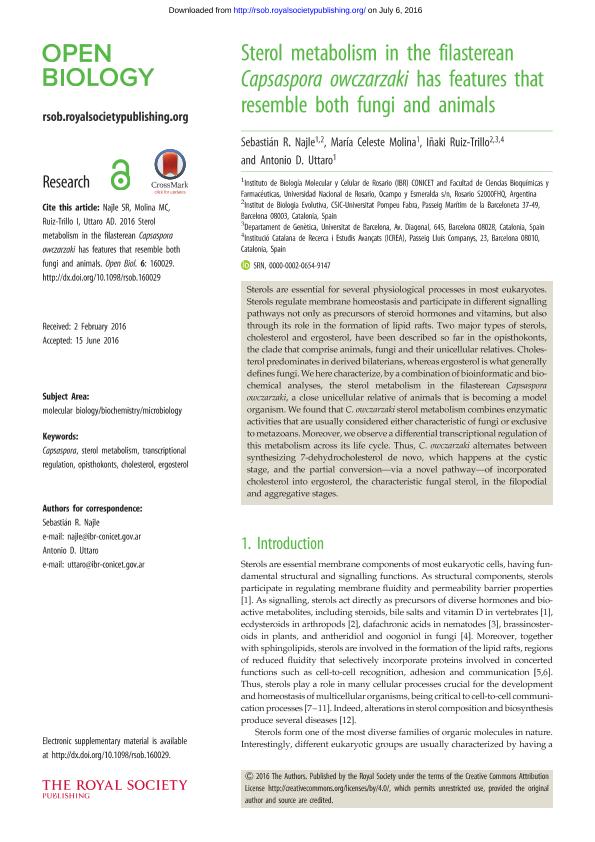Artículo
Sterol metabolism in the filasterean Capsaspora owczarzaki has features that resemble both fungi and animals
Fecha de publicación:
07/2016
Editorial:
Royal Society of London
Revista:
Open Biology
ISSN:
2046-2441
Idioma:
Inglés
Tipo de recurso:
Artículo publicado
Clasificación temática:
Resumen
Sterols are essential for several physiological processes in most eukaryotes. Sterols regulate membrane homeostasis and participate in different signalling pathways not only as precursors of steroid hormones and vitamins, but also through its role in the formation of lipid rafts. Two major types of sterols, cholesterol and ergosterol, have been described so far in the opisthokonts, the clade that comprise animals, fungi and their unicellular relatives. Cholesterol predominates in derived bilaterians, whereas ergosterol is what generally defines fungi. We here characterize, by a combination of bioinformatic and biochemical analyses, the sterol metabolism in the filasterean Capsaspora owczarzaki, a close unicellular relative of animals that is becoming a model organism. We found that C. owczarzaki sterol metabolism combines enzymatic activities that are usually considered either characteristic of fungi or exclusive to metazoans. Moreover, we observe a differential transcriptional regulation of this metabolism across its life cycle. Thus, C. owczarzaki alternates between synthesizing 7-dehydrocholesterol de novo, which happens at the cystic stage, and the partial conversion-via a novel pathway-of incorporated cholesterol into ergosterol, the characteristic fungal sterol, in the filopodial and aggregative stages.
Archivos asociados
Licencia
Identificadores
Colecciones
Articulos(IBR)
Articulos de INST.DE BIOLOGIA MOLECULAR Y CELULAR DE ROSARIO
Articulos de INST.DE BIOLOGIA MOLECULAR Y CELULAR DE ROSARIO
Citación
Najle, Sebastián Rodrigo; Molina, Maria Celeste; Ruiz Trillo, Iñaki; Uttaro, Antonio Domingo; Sterol metabolism in the filasterean Capsaspora owczarzaki has features that resemble both fungi and animals; Royal Society of London; Open Biology; 6; 7; 7-2016; 1-14; 160029
Compartir
Altmétricas




